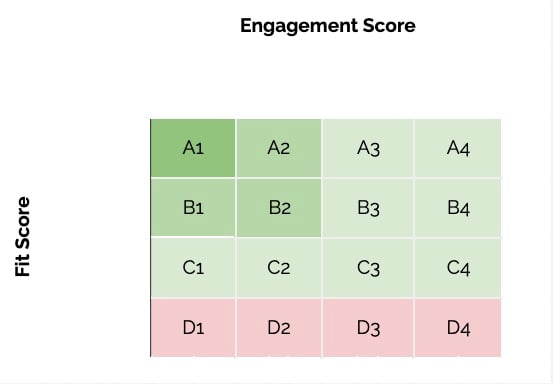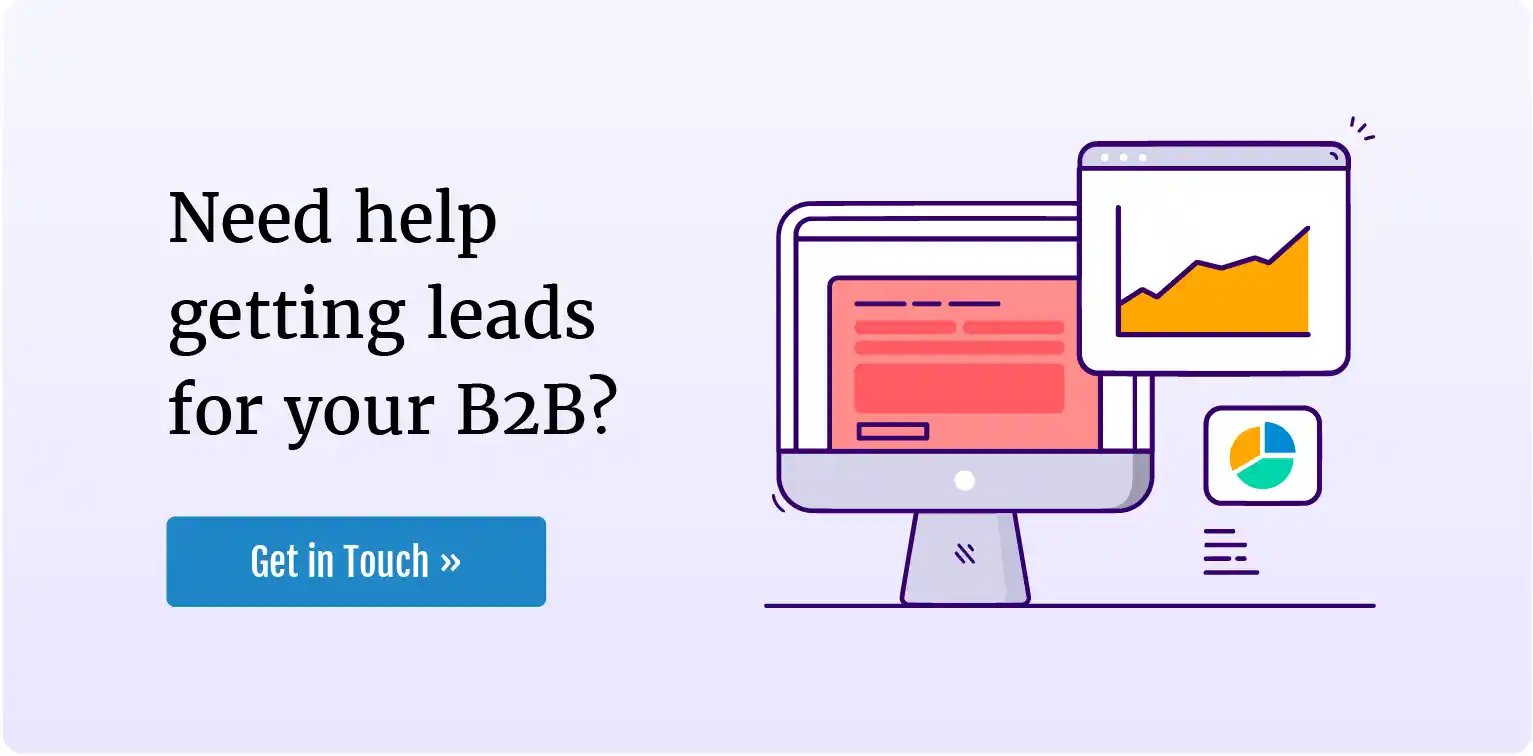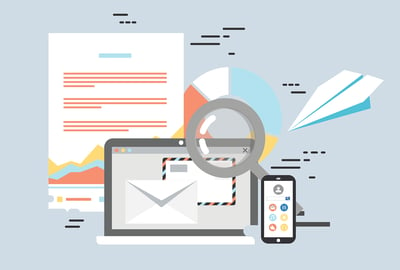Lead scoring is often a solution looking for a problem. Many companies can manage their lead flow just fine, so a scoring system only gets in the way.
But when lead volume grows to the point of being overwhelming—sales teams do have a problem: they need a way to prioritize which leads to pursue based on who’s most likely to become opportunities.
Without a way to do this, opportunities slip through the cracks, leaving business on the table.
Lead scoring, when implemented correctly, maximizes sales productivity and revenue potential by surfacing the leads within that crowded pipeline that deserve the sales team’s attention most.
“When implemented correctly” is the key term here, as implementation is often misguided, making the whole effort seem like a bust. But for those who can benefit from a lead scoring system that actually works, it’s a lifeline.
You may belong in this group if you find that you:
- Have such a high volume of leads your sales team has trouble keeping up
- Aren’t sure which leads are most viable at any given time
- Have received requests from the sales team for a system to help them
- Have a large database with lots of old leads that periodically reactivate
This guide briefly reviews the significance of lead scoring, shares clever strategies for overcoming common implementation pitfalls, and guides you through the process of setting up a tailor-made lead scoring system that empowers your sales team to work smarter and achieve greater success.
What is lead scoring?
Lead scoring is the process by which you categorize and prioritize leads based on their perceived value to your business based on their likelihood of converting into customers.
By assigning scores to each lead, a sales team can pluck out the most promising prospects from a packed pipeline.
Where good lead scoring separates itself from bad lead scoring is how those scores are determined.
More on that in just a second.
What are the benefits of lead scoring?
Lead scoring helps salespeople focus on the leads most likely to become customers and/or generate the most revenue. This helps them work more efficiently to maximize profits and save time.
More specifically, Marketo points out that lead scoring:
- Increases sales productivity by improving lead quality
- Improves ROI by focusing on the right accounts
- Helps improve your revenue cycle by identifying individuals in need of nurturing and improving productivity
- Strengthen marketing-sales alignment by working together to solve problems and improve efficiency
Problems with how many companies score leads
Companies run into a number of common problems with lead scoring that can easily be avoided with some forethought.
1. They don’t really need to score leads
Lead scoring makes the most sense for companies with large lead volumes, good reporting that enables them to establish data-informed scores, and the CRM infrastructure (such as HubSpot) to support lead scoring.
If your lead volume is manageable, lead scoring will likely have little impact on sales efficiency since you don’t need to prioritize some leads over others in the first place. Your time and effort will probably be better spent elsewhere.
In many cases, a well-organized pipeline gives you what you need to prioritize leads simply by assigning lifecycle stages (i.e. subscriber, lead, marketing qualified lead, sales qualified lead, opportunity, customer). Again, a modern CRM like HubSpot can do this for you.
2. It’s poorly implemented
As we mentioned earlier, botched implementation is a huge problem with lead scoring.
Typically, bad lead scoring systems suffer from a few specific problems:
They over-emphasize demographics
Demographic data (e.g., job title, company size, location) is typically easy to use for scoring. But focusing too heavily on demographic factors while neglecting behavioral and engagement data can give you an unbalanced (and inaccurate) lead scoring system. As we explore later in this guide, an effective lead scoring system takes a more holistic approach that scores on more “dimensions” of a lead.
They use inadequate or old data
A lead scoring system built on incomplete, outdated, or low-quality data will almost certainly provide inaccurate results—making things worse rather than better! This problem is mostly solved by using a modern CRM tool and basic database hygiene.
They’re more complex than they need to be
Sometimes scoring complexity is conflated with sophistication. But over-engineering a scoring system with intricate calculations and tons of factors may only confuse sales teams while something much more simpler would have captured the true signals of a high-quality lead. The simpler and more intuitive the model, the more likely it will capture real signals and be used.
They Ignore negative scoring factors
A lead scoring system that focuses solely on positive indicators without accounting for negative factors (e.g., inactivity, unsubscribes, and disqualifying demographic information) may not accurately reflect a lead's true potential—especially when certain criteria will definitely disqualify someone.
3. It’s marketing’s idea alone
Often, marketing teams decide that lead scoring is a good idea without consulting sales to confirm there’s a problem that needs solving. Simply put, lead scoring systems are for the benefit of salespeople, not marketers, most of the time.
When marketing drives a lead scoring implementation, salespeople may find themselves strong-armed into systems set up and operated by marketers that they never asked for and don’t know how to use.
If the salespeople who receive the scored leads don’t know what to do with them, or the company has no clear plan for next steps once leads have been scored, the effort feels pointless and the system goes largely unused.
4. Lack of training and alignment
Even if lead scoring has been set up properly, that doesn’t mean everyone knows what to do with it. Often, many key people don’t understand how lead scoring works, how their specific system works, or what it can actually do.
This misalignment can lead to sales teams disregarding the lead scoring system altogether, rendering it ineffective.
Lead scoring types
Marketo has a sensible way of breaking down lead scoring into two fundamental types: explicit and implicit.
- Explicit lead scoring uses information you have about leads based on hard, known data, such as information a lead has provided in a form.
- Implicit lead scoring uses information about a lead that is implied through their digital behavior, such as which pages or content they’ve engaged with/consumed (and what can be inferred from that engagement).
Both offer useful clues as to which leads are more likely to convert.
How to score B2B leads: easy, intermediate, and advanced methods
Easy lead scoring
The most straightforward approach to lead scoring involves assigning contact lifecycle stages in your CRM.
HubSpot, for example, provides the following default lifecycle stage properties that you can designate to contacts using filters:
- Subscriber: Individuals subscribed to your newsletter or blog.
- Lead: People who have expressed interest in your company.
- Marketing Qualified Lead (MQL): Prospects interested in learning more about your company.
- Sales Qualified Lead (SQL): Individuals eager to engage with your sales team.
- Prospect: Potential customers who are considering doing business with you.
- Customer: Clients who have already made a purchase from your company.
- Evangelist: Loyal customers who actively promote your company to others.
If you prefer, you can also assign custom lifecycle stages that reflect a unique sales process.
While precise definitions for these categories differ, these lifecycle stages can be automatically assigned in HubSpot to help salespeople identify who to engage first.
A sales qualified lead, for example, is much closer to buying, and therefore should be a higher priority than a regular lead.
Learn how to set this up in HubSpot →
Intermediate lead scoring
A more nuanced (but still simple) way to score leads is by looking at your past deal data to identify traits your best leads had in common, as well as traits your worst leads had in common. (This can be done by collaborating with your sales team directly.)
The traits you choose to factor into lead scoring depend on your business and the data you’ve gathered.
Don’t have this data?
That’s okay. We recommend you hit the pause button and get your analytics set up to capture this information. That way, you’re fully prepared to take this on in six to 12 months.
If you’re a current HubSpot user, our free marketing hub portal audit checklist is a great place to start.
Here’s a simple process for conducting this past deal review to gather data-informed lead scoring criteria.
First, gather a year or so of historical closed/won deals. Ask yourself:
- What behaviors/actions did the good leads commonly take? Example: downloading a specific whitepaper or piece of content.
- What did the best leads do more frequently than the others? Example: downloading a mid- or low-funnel piece of content or viewing certain website pages.
- What traits do the good leads often have in common? Example: belonging to the finance industry versus another industry vertical — or falling within a certain geographic or company size range.
- What traits do the best leads often have more frequently than the others? Example: Having a certain job title that’s shared among tons of other customers.
Next, ask the same questions of the closed/lost deals:
- What behaviors/actions did the worst leads commonly take? Example: signing up for a webinar but never attending.
- What did the worst leads do more frequently than the others? Example: opening but never responding to or clicking through from emails.
- What traits do the bad leads often have in common? Example: belonging to nonprofits or some specific market segment that converts at a far lower rate compared to others.
- What traits do the worst leads often have more frequently than the others? Example: Being a student.
HubSpot notes that a lot of useful lead characteristics fall under these 6 broad categories:
- Demographics
- Company info
- Behavior (online)
- Email engagement
- Social media engagement
- Spammer red flags
In our experience, there a number of lead characteristics to investigate and consider:
- White paper/lead magnet downloads
- Webinar attendance
- Views of service pages
- High intent page visits (e.g. pricing or service page)
- Total page visits
- Contact form submissions
- Total form submissions
- Job title
- Location (e.g. inside/outside US)
- Company size
- Industry
- Location
- Original source of page visit (e.g. organic search)
Select the most telling characteristics you’ve determined from your actual deal data. Then, assign positive point values to traits that correlate with winning deals and negative point values to the traits correlated with losing deals.
While this is not an exact science, HubSpot aptly suggests one way to determine which metrics correlate with the highest close rate is to calculate what percentage of leads who took that action or exhibit that trait went on to close, and compare that to your average close rate.
- For example, if the close rate for leads with the job title CFO is 10 times higher than your average close rate, you could assign points by multiplying your average close rate by 10.
While everyone assigns points a little differently, HubSpot notes that most lead scoring models assign scores on a scale from 0 - 100.
The contacts that score the highest are likely the most valuable. If you like, you can set things up in HubSpot so the system calculates this for you. You can also use their predictive scoring software.
Other factors to consider
When developing a personalized lead scoring system, HubSpot suggests taking the following aspects into account:
- Fit: Assess the compatibility of a lead with your company's offerings and goals.
- Interest: Evaluate a lead's eagerness to collaborate with you, which can be determined through their engagement with your website and interactions with your company. To capitalize on opportunities, configure your CRM to assign high scores to leads who have recently interacted with you, even if they haven't been in touch for some time.
- Persona: If your company caters to multiple buyer types, consider devising separate scoring systems for each persona to better address their unique needs and preferences.
- Upselling: When targeting existing customers for upselling opportunities, tailor a scoring model to reflect their behavior and likelihood of making repeat purchases, as the indicators of a good lead may differ from those of a new prospect.
Advanced lead scoring
If you’re looking for a system that meets more nuanced and complex scoring needs, we like SmartBug’s system.
They score with two different dimensions (fit and engagement) and then combine them into a composite score. “Fit” dimensions include contact properties that make a lead more (or less) likely to be a good customer. “Engagement” dimensions measure how much and how recently a lead has interacted with your company, which often aligns with interest.
Smartbug does numerical scores for one (1,2,3. . .) and alphabetical scores for the other (a,b. . .) which lets you set up a grid with a gradient from excellent to bad.

Source: SmartBug (lightly adapted)
In this system, for example, a 1A is both an excellent fit and excellent for engagement, but a 3A is an okay fit with excellent engagement, while a 4A is a terrible fit with excellent engagement.
The first is a great lead, the second is a decent lead, and the third is a bad lead, even though it has shown excellent engagement.
To summarize, the grades are:
- 1 (fit) = excellent
- A (engagement) = excellent
- 2 (fit) = good
- B (engagement) = good
- 3 (fit) = okay
- C (engagement) = okay
- 4 (fit) = bad
- D (engagement) = bad
This system is great because it accounts for both customer value and active interest in your company at a given moment (and in turn, likelihood of movement through the buying process).
The caveat here is that to assign scores, you need to have good marketing data on what actions lead to successful sales conversations on the marketing side and what types of companies closed the best and at what rate on the sales side.
In general, you need to be pretty sophisticated in your ability to capture the actual revenue value of every action and every kind of characteristic.
Specifically, it’s best if you:
- Have been marketing online for a while and have a CRM.
- Keep a clean CRM database.
- Have a mature sales operation.
- Have good marketing data on which actions lead to successful sales.
- Are able to capture the actual revenue value of every action and every characteristic.
That’s why if you think implementing a lead scoring system is a good idea for your company, it’s best to consider whether you have enough clean, historical data to get the ball rolling.
If not, it would be better to get this lined up first before digging into lead scoring. Your system will be more effective as a result.
Check out their free template to take this system for a test run.
Final thoughts and next steps
Lead scoring isn’t for everyone, but for companies that can benefit, it can help them save time, reduce stress on their salespeople, and maximize profits. We wish you luck in implementing a tailor-made lead scoring system for your B2B business.
If you need assistance in setting up a lead scoring system—or digital marketing in general—we’d love to help.
Topics: Sales & Marketing Strategies





